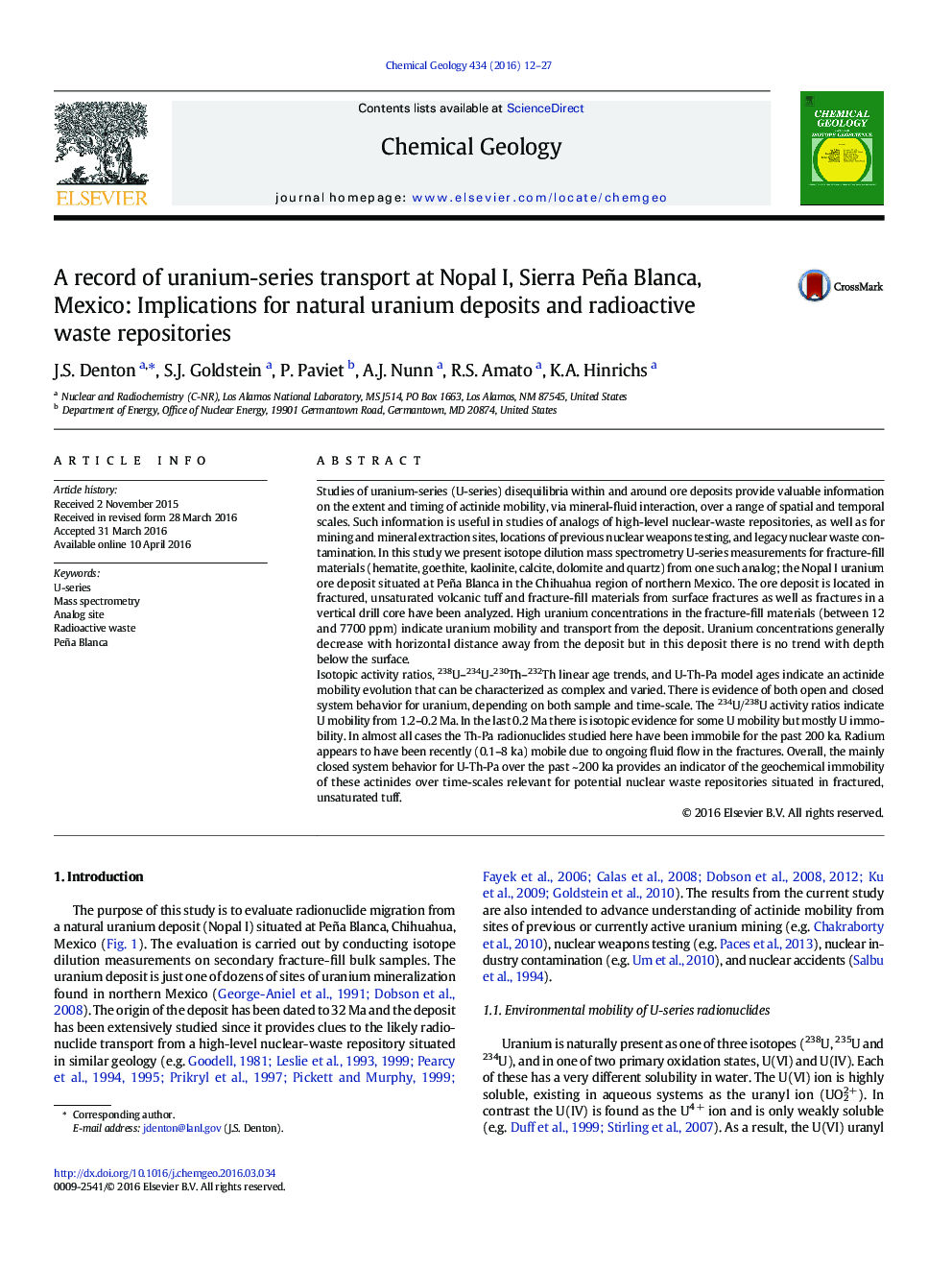| کد مقاله | کد نشریه | سال انتشار | مقاله انگلیسی | نسخه تمام متن |
|---|---|---|---|---|
| 4698271 | 1637540 | 2016 | 16 صفحه PDF | دانلود رایگان |

• Uranium has been mobile from the deposit up to 40 m horizontally and 200 m vertically.
• Uranium has been mobile in the last 0.2 to 1.2 Ma; radium has been mobile in the last 0.1–8 ka.
• In the last 0.2 Ma there is evidence for some uranium mobility but mostly uranium immobility depending on sample.
• Thorium and protactinium have been largely immobile in the last 185 ka.
• 238 U–234 U-230Th-232Th linear age trends were obtained for two deep fracture samples, one sample showed open system for U.
Studies of uranium-series (U-series) disequilibria within and around ore deposits provide valuable information on the extent and timing of actinide mobility, via mineral-fluid interaction, over a range of spatial and temporal scales. Such information is useful in studies of analogs of high-level nuclear-waste repositories, as well as for mining and mineral extraction sites, locations of previous nuclear weapons testing, and legacy nuclear waste contamination. In this study we present isotope dilution mass spectrometry U-series measurements for fracture-fill materials (hematite, goethite, kaolinite, calcite, dolomite and quartz) from one such analog; the Nopal I uranium ore deposit situated at Peña Blanca in the Chihuahua region of northern Mexico. The ore deposit is located in fractured, unsaturated volcanic tuff and fracture-fill materials from surface fractures as well as fractures in a vertical drill core have been analyzed. High uranium concentrations in the fracture-fill materials (between 12 and 7700 ppm) indicate uranium mobility and transport from the deposit. Uranium concentrations generally decrease with horizontal distance away from the deposit but in this deposit there is no trend with depth below the surface.Isotopic activity ratios, 238U–234U-230Th–232Th linear age trends, and U-Th-Pa model ages indicate an actinide mobility evolution that can be characterized as complex and varied. There is evidence of both open and closed system behavior for uranium, depending on both sample and time-scale. The 234U/238U activity ratios indicate U mobility from 1.2–0.2 Ma. In the last 0.2 Ma there is isotopic evidence for some U mobility but mostly U immobility. In almost all cases the Th‐Pa radionuclides studied here have been immobile for the past 200 ka. Radium appears to have been recently (0.1–8 ka) mobile due to ongoing fluid flow in the fractures. Overall, the mainly closed system behavior for U-Th-Pa over the past ~ 200 ka provides an indicator of the geochemical immobility of these actinides over time-scales relevant for potential nuclear waste repositories situated in fractured, unsaturated tuff.
Journal: Chemical Geology - Volume 434, 15 September 2016, Pages 12–27